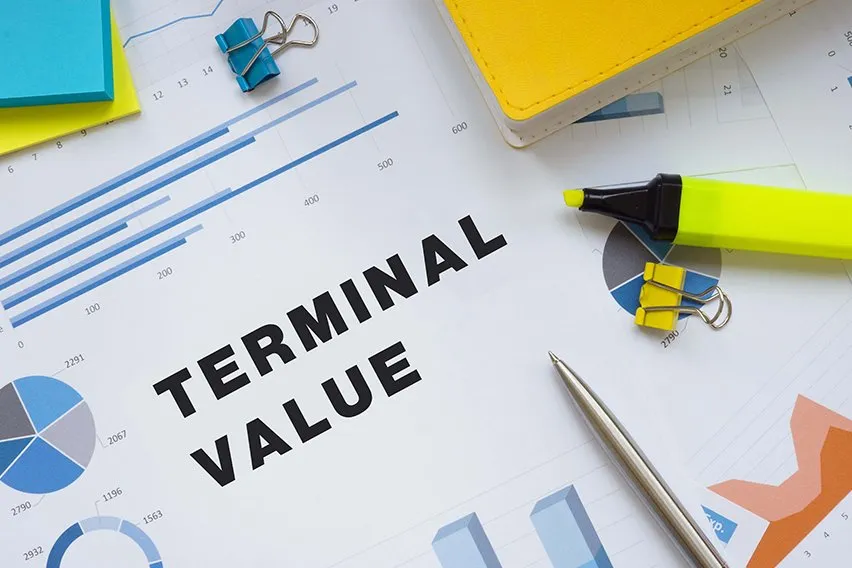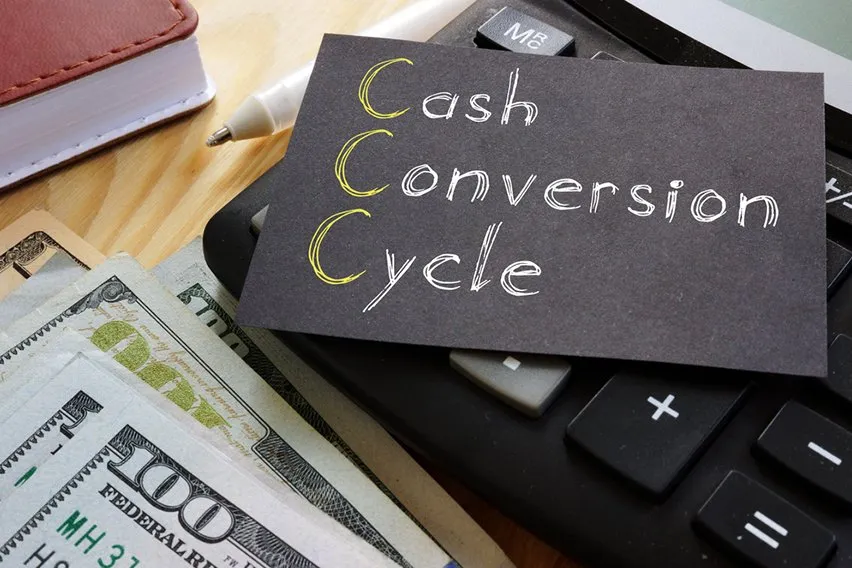What Is Terminal Value & How to Calculate It in DCF

Have you ever heard the term terminal value before? You might have some sense as to what it means, but do you know how to calculate it properly? It can sometimes feel confusing and overwhelming.
It can be difficult to estimate and forecast your businesses cash flow in the future. Discounted cash flow (DCF) is a financial model that can be used to help determine your business’s value. It will also generate assumptions and details about the total value of your business.
Here’s what you need to know about the terminal value and how to calculate it in DCF.
Here’s What We’ll Cover:
What Is Terminal Value?
Terminal value is the value of an asset or your business that goes beyond future cash flow forecasts and estimates. It assumes that your business is going to grow at a set growth rate after the forecasted period. Basically, it determines the value of our company in perpetuity beyond a certain period, which is usually five years.

What Is Discounted Cash Flow (DCF)?
DCF is a method used to help calculate the total value of your business and it has two main components for terminal growth rate.
- Perpetual growth, which assumes that your business is going to continue to generate cash flow at a constant rate.
- Exit multiple, which assumes that your business is going to be sold for a certain market metric
The DCF method is based on an asset having an equal value to all future cash flow that comes from that specific asset.
How to Calculate Terminal Value in DCF
The terminal value calculation is the value of your company. In order to calculate a terminal value, you will first need to know your business’s first cash flow and cash flow growth rate and discount rate. Make sure that all those details come from the same terminal period.
There are three main ways that you can estimate your terminal value.
- Liquidation Value
- This assumes that your business won’t continue to operate forever and will get sold or closed at some point in the future
- The estimated net value will then become the terminal value
- Use this formula: book value of assets in the terminal year (1 + inflation rate) x average life of assets = expected liquidation value
- Multiple Approach
- This is based on the assumption that your business might get sold and you want to measure the value of revenue or net income
- It’s a simple approach compared to some of the other methods
- Use this formula: Financial metric (such as EBITDA) x Trading Multiple (such as 10x) = Terminal Value
- Stable Growth
- This method assumes that your business is going to continue to operate and generate cash flow at a constant rate
- It usually means that cash flow grows beyond the investment period
- Cash flow is then reinvested into the business
- Use this formula: Cash flow in the next period / (Discount Rate – Stable Growth Rate) = Terminal Value

What Is a Negative Terminal Value?
Sometimes your terminal value could come out negative, but why does that happen? Usually, it’s because the estimated cost of future capital exceeds your assumed growth rate. But even if you have a negative terminal valuation it won’t last for too long.
The equity of your business can’t have a negative value. When your equity value falls to zero, any remaining liabilities would then get sorted out during a bankruptcy proceeding.
Key Takeaways
If you want to calculate the terminal value in DCF it’s important to understand a few details before moving too far ahead. There are a few different approaches that you can take to calculate a terminal value, it just depends on where your business is heading in the future.
The liquidation approach is a valuation technique that assumes your business isn’t going to operate forever and will close or get sold at some point. The multiple approaches assume that you want to sell your business and you want to measure the value of your revenue. And the stable growth approach assumes that your business will continue to operate and constantly generate cash flow.
Use the formulas outlined above to help you calculate your business’s terminal value. It can be difficult to have an accurate cash flow analysis for your business. There can be a lot to consider. DCF is a financial model that can also help you determine the value of your business.
Did you enjoy reading this guide? Head over to our resource hub for more great content!
RELATED ARTICLES

 Grant Vs Loan: What’s the Difference?
Grant Vs Loan: What’s the Difference? What are Ordinary Shares?
What are Ordinary Shares? What Is an IBAN Number & BIC (SWIFT Code)?
What Is an IBAN Number & BIC (SWIFT Code)? Consultant Vs Contractor: Which Is the Best?
Consultant Vs Contractor: Which Is the Best? Cash Conversion Cycle (CCC): Definition, Formula & Calculation
Cash Conversion Cycle (CCC): Definition, Formula & Calculation What Is an EORI Number & How to Get One
What Is an EORI Number & How to Get One